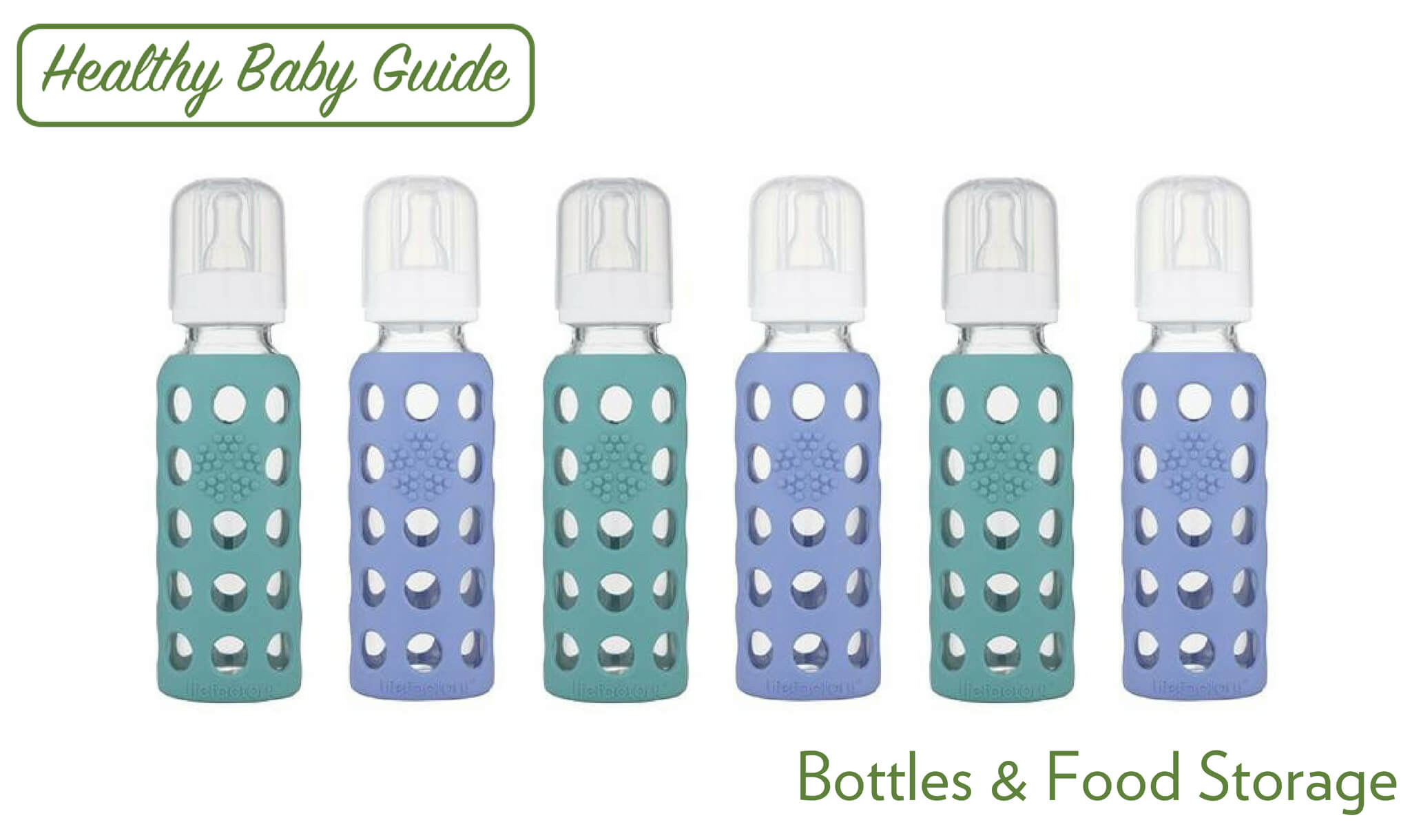Healthy Baby Guide to Bottles & Food Storage
Keeping your children’s food safe isn’t just about what you feed them; it is also what you use to feed them. Traditional plastic bottles can contain BPA, a potentially harmful chemical. There has recently been a surge in availability of both BPA-free and glass bottles. In addition to bottles, parents should be careful of the BPA and PVC found in other food storage containers. Find safe, healthy baby bottles in our Bottles & Sippy Cups section.
What You Should Know About BPA
Safe plastic is free of all bisphenols, not just BPA (learn more in our article An Alphabet of Bisphenols), and phthalates. Many bottles are made of polycarbonate plastic or polyvinyl chloride (PVC), and are then softened using BPA and phthalates, which are known hormone disruptors. A hormone disruptor is a synthetic chemical that acts like or imitates natural hormones1. Hormone disruptors may cause “hormone alteration, reproductive system deficits, and low fertility” in boys, and “early-onset puberty” in girls2.
A Center for Disease Control study found BPA in 95% of urine of people tested; the younger the subject, the higher the concentration. The median level of chemical tested was higher than what we know can cause harm to animals3. In January 2008, a report published by the National Toxicology Program found BPA to be of concern for fetuses and small children. BPA was first discovered in 1891 during a search for synthetic estrogens.
Chemicals from plastics are able to leach into your child’s food or drink with everyday use and especially with high heat exposure (i.e. microwave use, dishwashing, sterilizing)4. Studies have recorded the leaching of BPA into the bottle when it is frozen, heated, at room temperature, reused, etc5.
BPA-Free plastics are no better if they are replacing BPA with BPS or other bisphenols. (Learn more in our article, Why BPA-Free Products Aren’t Any Better.
Finding Healthy Baby Bottles
If you want to use plastics, use polypropylene or polyethylene with the numbers 1, 2, 4, or 56.
Avoid products made using plastics with the following numbers on the bottom:
# 3 is PVC, which releases phthalates.
# 6 is polystyrene which may leach styrene (a carcinogen)6 into food, especially if microwaved.
# 7 is usually polycarbonate plastic which can release hormonally disruptive BPA.
Glass or silicone are other safe alternatives. Many glass bottles now come with a protective sleeve, which prevent the bottle from breaking when dropped.
Nipples
Plastic nipples may contain phthalates. Silicone nipples are a good choice as they are available without phthalates.
Food Storage
PVC and other toxins can be found in plastic wrap and food storage containers. Try to use glass, stainless steel, or BPA and PVC free storage for food. Plastic wraps that cling are made from PVC, which can leach into food. If you have to store food in plastic containers, stay away from #3, #6 and #7 and never microwave them.
Dishes
Many cute plastic children’s dishes are made with melamine—the product that caused urinary tract infections and kidney damage in China when ingested through infant formula. The FDA responded that no level of melamine exposure is safe for an infant. Studies as late as 2006 showed leaching from food containers such as mugs made of melamine into the contained food. Instead, use stainless steel or safer plastics.
Related Articles
All Our Healthy Baby Guides
Healthy Baby Guides Overview
Healthy Baby Guides Glossary
Healthy Baby Guide to Clothing
Healthy Baby Guide to Diapers
Healthy Baby Guide to Toys
Healthy Baby Guide to Personal Care
Healthy Baby Guide to Bedding
Healthy Baby Guide to Mattresses
Healthy Baby Guide to Furniture
Healthy Baby Guide to Household Cleaners
Healthy Baby Guide to Food
Resources
- Women’s Health and the Environment Network – http://www.wsn.org
- “Do You Know What’s In Your Baby’s Mattress?” – Healthy Child, Healthy World
- Barnett, Sloan, Green Goes with Everything p.116
- http://hubpages.com/hub/How-to-Avoid-BPA-in-Baby-Bottles-and-Sippy-Cups
- “Smart plastics guide: healthier food uses of plastics for parents and children.” Institute for agriculture and trade policy.” October 2005.
- www.ewg.org


